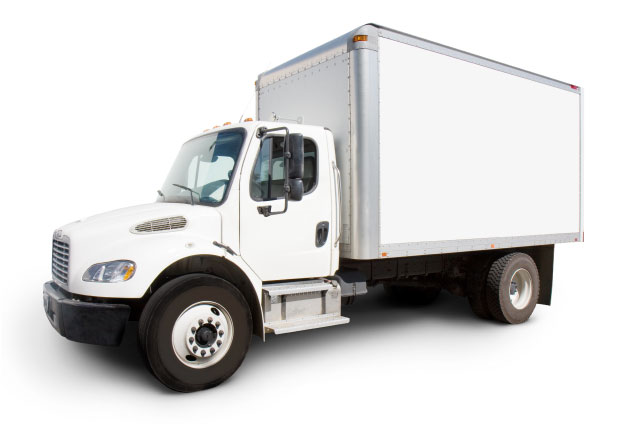Maintain Your Sofa's Condition with Tried-and-True Storage Tips
Posted on 04/06/2025
Maintain Your Sofa's Condition with Tried-and-True Storage Tips
Your sofa is more than just a functional furniture piece; it's a centerpiece of your living room, a source of comfort after a long day, and often an investment. Whether you're moving, remodeling, or simply needing extra space, knowing how to maintain your sofa's condition with tried-and-true storage tips can make the difference between preserving a pristine couch and facing costly damage or wear and tear. This comprehensive guide will provide you with everything you need to know about properly storing your sofa, safeguarding its condition, and ensuring it remains in excellent shape, ready for years of use.
Why Proper Sofa Storage Matters
Your couch's longevity depends as much on how you store it as on how you use it daily. Inadequate storage can lead to:
- Fabric tears and cracks
- Foul odours and mildew build-up
- Structural warping or frame damage
- Permanent stains from dust, leaks, or pests
- Fading and material degradation
Learning the best ways to store your sofa ensures its durability and saves you money in the long run.

Preparing Your Sofa for Storage
1. Thoroughly Clean the Sofa
Before storing, clean your sofa properly to prevent lingering stains or crumbs that could attract pests or cause odors. Consider these expert cleaning steps:
- Vacuum every crevice and surface to eliminate dust, dirt, and hidden debris.
- Spot-clean stains using a manufacturer-approved upholstery cleaner.
- Remove and wash all cushion covers if possible.
- Allow the entire sofa to dry completely before packing. Remaining moisture can foster harmful mold and mildew in storage.
2. Disassemble When Possible
Many modern sofas are designed for easy disassembly. Taking apart legs, cushions, or slipcovers can make storage more space-efficient and protect vulnerable components:
- Detach wooden or metal legs and pack them separately to avoid stress on screw holes.
- Remove cushions and pillows for independent wrapping.
- Label all hardware so reassembly is hassle-free later on.
Tip: Keep all bolts and screws in a labeled bag for organization.
3. Protect With Appropriate Coverings
Never use plastic wrap directly on your sofa for long-term storage; it can trap moisture and encourage mildew. Instead:
- Use a breathable sofa cover or specially designed moving blankets.
- Drape cotton sheets or covers over the sofa to shield it from dust, yet allow air circulation.
- If wrapping in plastic is necessary for transport, ensure you remove it upon arrival in storage to prevent condensation build-up.
Choosing the Best Storage Space for Your Sofa
The environment where you store your sofa is crucial. Factors like temperature, humidity, and cleanliness will directly affect upholstery and frame integrity.
1. Opt for Climate-Controlled Storage Units
Temperature fluctuations and high humidity are the main enemies of sofas in storage. Opt for:
- Climate-controlled storage units that regulate temperature and humidity -- ideal for leather, suede, or antique sofas.
- Units away from direct sunlight to prevent UV fading.
- Elevated indoor storage over outdoor or basement options to minimize risk of flooding or pest infestation.
2. Avoid Stacking Heavy Items on Sofas
Never stack boxes or furniture on top of your stored sofa. This can lead to frame warping, crushed cushions, and irreparable marks. Leave sofa pieces upright or on their feet whenever possible.
3. Ensure Proper Airflow Around the Sofa
Allowing space between your sofa and the unit's walls:
- Prevents condensation and moisture build-up
- Discourages mold and mildew growth
- Ensures even air circulation for fabric longevity
Pro tip: Use wooden pallets or risers to lift your sofa off the storage unit floor, adding an extra layer of flood and condensation protection.
Leather, Fabric, or Velvet? - Special Care for Different Sofa Types
Leather Sofas
- Treat with a leather conditioner before storage to keep the material supple and prevent cracks.
- Wrap in breathable fabrics -- never plastic.
- Avoid direct contact with wood or metal surfaces to prevent staining or mark transfer.
Fabric Sofas
- Use fabric protectants and ensure complete dryness before covering.
- Regularly check for stains or mold if your storage period is extended.
Velvet or Suede Sofas
- Gently brush the fabric before storage to remove dust.
- Handle with gloves to avoid oil marks.
- Ensure minimal pressure on cushions to preserve nap and avoid crushing.
Effective Packing Techniques to Maintain Your Sofa's Condition
1. Use Quality Packing Materials
- Furniture blankets and pads provide excellent cushioning.
- Cardboard corner protectors shield vulnerable edges from dings or dents.
- Cotton drop cloths or covers balance protection and breathability.
2. Cushion and Pillow Storage
- Store loose cushions and pillows separately in ventilated bags to prevent flattening and mold.
- Add a moisture-absorbing packet (silica gel) for extra protection inside bags.
3. Keep Away from Walls and Heaters
- Maintain at least a few inches of space between your sofa and any walls or heating units in storage.
- This prevents heat damage and allows airflow, reducing moisture risk.
Pest Prevention - An Overlooked Essential
Pests like rodents and insects can cause havoc on stored sofas if not properly addressed. Maintain your sofa's condition with these simple tips:
- Never store food or crumbs inside the sofa or storage space.
- Use natural pest deterrents like cedar blocks or lavender sachets among the cushions or nearby.
- Inspect for pest activity periodically, especially during longer storage durations.
Maintaining Your Sofa During and After Storage
1. Regularly Inspect Your Stored Sofa
If possible, visit your storage unit periodically. Check for signs of moisture, pests, or cover shifting. Early detection allows you to fix minor problems before they escalate.
2. Air Out Upholstery Every Few Months
- If storage is long-term, remove covers periodically and air out cushions in a dry, clean, and shaded area.
- This keeps the fabric fresh and minimizes musty odors.
3. Reassembly and Post-Storage Care
Once your sofa is ready to return to your home:
- Clean all components again before use, especially cushions and covers.
- Condition leather or wood trims if necessary.
- Avoid immediate sunlight exposure to allow materials to adapt back to room conditions gradually.
Common Mistakes to Avoid in Sofa Storage
- Storing the sofa while it's damp or dirty
- Wrapping the entire sofa in plastic for long periods
- Placing heavy objects atop cushions or frames
- Neglecting pest and moisture control
- Improper labeling of disassembled parts and hardware

Summary: Your Checklist to Keep Your Sofa in Excellent Condition
- Clean and dry your sofa thoroughly before storage
- Disassemble and wrap parts as needed for protection
- Use breathable covers and proper packing supplies
- Choose a climate-controlled, secure storage unit
- Keep the sofa elevated and away from walls and heavy items
- Implement pest and moisture prevention strategies
- Inspect and air out periodically if possible
Final Thoughts: Make Your Sofa Storage a Success
Taking time to maintain your sofa's condition with proven storage techniques will reward you with continued comfort, style, and value when you need your favorite seat back in your life. Whether your sofa is headed to a temporary storage unit during a move or tucked away for a seasonal renovation, applying these tips is the key to keeping it in like-new condition. For further peace of mind, consider investing in short-term insurance for valuable or antique pieces during storage.
Your sofa deserves care - and with these storage tips for sofa maintenance, it's easier than ever to keep its look and feel intact for generations.
Ready for more helpful guides on furniture care and storage? Browse our blog for the latest tips and expert insights on protecting your home essentials.





